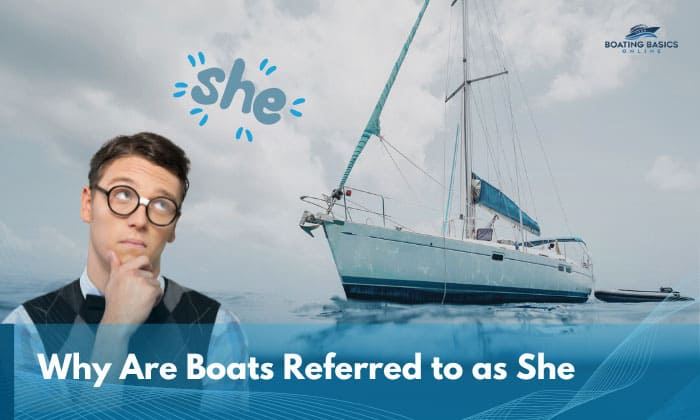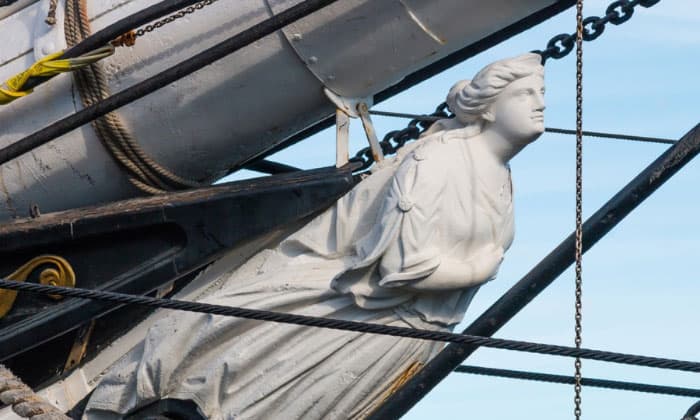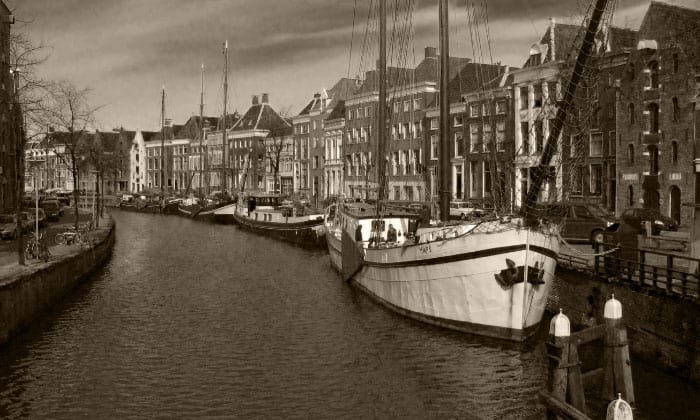I can’t really blame you for wondering, “Why are boats referred to as she?” We can hear boat names in passing, movies, and TV series. Also, they practically announce themselves with a female name or two painted on the hull.
There’s no definitive answer, only theories, and these two are the most compelling ones:
- The practice stems from the Romance languages, in which a “ship” is always referred to in the feminine.
- Boats house and protect their crew like caring mothers.
Table of Contents
- Historical Reasons for the Personification of Boats
- Origins of the Practice
- Cultural and Societal Factors That Influenced the Tradition
- Evolution of the Practice Over Time
- The Role of Gender in Nautical Language
- Symbolism and Metaphors
- The Debate Surrounding the Practice of Referring to Boats as She
- Modern-Day Usage of Nautical Language
- Frequently Asked Questions
- Conclusion
Historical Reasons for the Personification of Boats
The history behind the phenomenon of ships called she is as rich as the entire history of maritime navigation. Below, I’ve outlined every pertinent factor you need to look at, so you’ll gain a better understanding of it.
Origins of the Practice
Latin is the “ancestor” of Romance languages like Spanish, Portuguese, Italian, and French. As offshoots of Latin, these languages retained their parent’s grammatical gender system, so the Latin word “navis” for “ship” continued to be feminine in them.
If you’re not already aware of it, most of the countries that spoke these languages went on to become formidable naval powers from the 15th century onwards, so you can only imagine the big influence they had in shaping maritime culture.
Past the linguistic associations, we also need to look at a more primordial reason, particularly how naming ceremonies have been around since ancient times. Back then, we liked to name inanimate objects. Moreover, most sailors were men during those days.
As such, they like to name their vessels after the people they love the most, i.e. their wives or mothers. In turn, they readily bestow the boats with a “gender” and, at the same time, the belief that the vessel will be able to provide them with the same feminine protection against the unpredictability of the seas.
And, yes, these ceremonies were practiced by English-speaking folks before the language evolved into a more neutral one.
Cultural and Societal Factors That Influenced the Tradition
Once we look at the evidence from a comprehensive viewpoint, boats named after women became the norm due to the following factors:
- Based on the facts above, a more direct reason for the popularity of female names for boats is that it reinforces and affirms gender stereotypes. Mothers are traditionally known for being nurturing and protective of their children.
- The personification of nonliving things was normally done in the past, and these include boats and ships.
- Mythology figures in boat naming as well since, historically, ships named after females have been inspired by certain goddesses like Athena, Aphrodite, Demeter, etc.
- Just look at this exhaustive list of female historical ship names in the U.S. military alone, and you’ll see how deeply rooted this tradition is in the Navy’s culture: List of U.S. military vessels named after women
- Linguistic factors influenced the tradition of using feminine pronouns to address boats and ships, and it carried over to modern Romance languages and the English language, too.
Evolution of the Practice Over Time
It can be traced back to ancient times, but it became more of the norm starting in the Middle Ages, or 1375, to be exact. The personification of boats continued for centuries, lasting all the way to the Renaissance, which was the start of the Age of Discovery up to the 20th century.
The reasons for naming boats as such became numerous over time, with some claiming that it’s a way for sailors to appease Mother Nature’s awesome power.
The usage of “she” is evidently dwindling in modern times, even though naming ceremonies may still be practiced.
There’s no set date when this doing away with feminine pronouns happened. However, we can get clues from news articles. For instance, back in 2002, Lloyd’s List, a prominent shipping publication in London, stopped referring to their vessels as ‘she’.
It’s safe to say that the shift toward more gender-neutral pronouns happened fairly recently.
The Role of Gender in Nautical Language
This role is obviously more pronounced in how the Romance languages greatly influenced maritime language.
Spain and Portugal were major maritime powers during the Age of Exploration and played a vital role in influencing maritime terminology. France inevitably became one, too.
If we’re going to take a closer look at the genders assigned to specific nautical terms, we can see that it’s a relatively mixed bag of both masculinity and femininity:
- For example, “boat” in French and Spanish respectively are le bateau and bote, which are masculine nouns. However, in France, most ships, even the largest ones, bear a female name.
- Capitán in Spanish is masculine, which is why if you want a more gender-neutral term for the boat operator, then it would be better to use “skipper”.
Most sailors in the Mediterranean continue to sail ships referred to as she, and over time, their English-speaking counterparts adopted this tradition.
Symbolism and Metaphors
Nautical language related to gender also has a figurative touch, as evidenced by the following metaphors:
1. A woman at the helm
In a ship, you use the helm to steer the ship, so this simply means a woman is in a position of important control.
2. Maiden voyage
This connotes the excitement felt for the first voyage of a ship, which is likened to a young woman taking her first steps and facing what the world has to offer.
3. Mothership
This can be any ship (spacecraft included) that houses a number of smaller vessels for maintenance, subsequent launching, and protection. Again, there’s the evident maternal association.
The Debate Surrounding the Practice of Referring to Boats as She
The debate mostly stems from political correctness and the argument that adhering to this practice is nothing short of the literal objectification of women. Obviously, some feminists will adopt such a stance; however, others also argue that it’s important to look at the nuances of the tradition.
For one, we need to look at the reason why it’s being practiced. It’s actually borne out of respect for the vessel – and the hope and trust that “she” will ensure “her” crew’s survival and success. It’s not at the least bit done to degrade women, in short, but is actually the complete opposite.
Modern-Day Usage of Nautical Language
Whether the arguments above would suffice remains to be said, but what’s sure is that certain old salts will likely stick to this ingrained belief and tradition to the grave.
Besides gendered language, the richness of the nautical industry can’t be more evident in the plethora of terms known and used by sailors.
- “Port” and “starboard” refers to the left and right sides of the boat, respectively.
- Terms to describe the position and direction of the ship can be “aft”, “abaft”, or “abeam” – and those are the only ones beginning in A!
Frequently Asked Questions
Is it offensive to refer to a boat as “she”?
For most people, it’s not because of the innately harmless reasons behind it. Ultimately, it will always be subject to individual interpretation and debate.
Are there any exceptions to referring to boats as “she”?
This question is tied to “Are all boats female?”, which is equally popular. The answer is a resounding yes, as ships have been named after men (e.g. USS Carl Vinson or the Bismarck) and abstract concepts like “Slice of Life” or “Constitution.”
What are some other examples of personification in maritime culture?
Figureheads carved on the bow of the ship count as personification. You also need not look further than Greek mythology to see this practice.
Just look at sirens and naiads. Also, Ceto, a daughter of Gaea and Pontus, is said to personify the dangers of the sea.
Conclusion
Once we examine the historical and cultural roots of this tradition, we can come up with a satisfactory answer to “Why are boats referred to as she?” It’s simply a way of honoring their importance, much in the same manner that we hold women in high regard for their immeasurable influence over our lives.
It may connote sexism, but I believe most boaters and passengers don’t really mind – again because we’re actually honoring women by doing so.

“My intention from the first day establishing Boating Basics Online is to provide as much help as possible for boaters who want to experience a first safe and convenient trip. So feel free to join us and share your beautiful journeys to the sea!”






